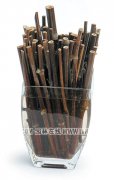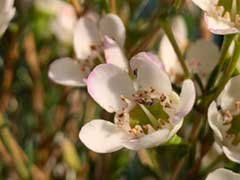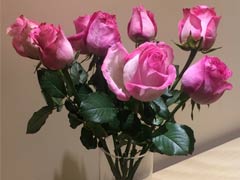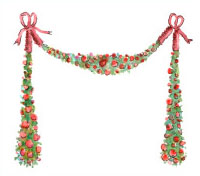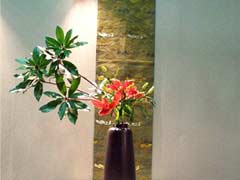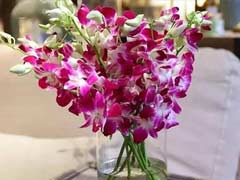How to match flower arrangement
In nature, the cells of most plant leaves contain green pigments. We know that when sunlight passes through a prism, it will be divided into six visible color spectra. If the six-color light passes through the chlorophyll solution and is transmitted to the white screenAt this time, it can be found from the spectrum on the screen that there is a wide black band in the part of the red light close to the orange light and the blue light, while the green part is still green. This shows that there are options for chlorophyll to absorb light..
Green can effectively use sunlight, which is the result of plant evolution in the long-term natural selection process. At the same time, plants have formed various differences in order to adapt to the needs of the natural ecological environment and are inhibited by their own plastids and pigments.Color branches, leaves, flowers and fruits.
In different types of plants, the proportion of chlorophyll contained is different, and the color depth is different. There are some plants. Contain lutein and carotene. It can make plants red or orange, and they are mainly found in petals orIn the fruit. The leaves of some plants turn yellow before they fall in autumn because they lose chlorophyll, leaving only lutein and carotene.
There is also an anthocyanin in the plant, which is mostly found in petals and fruits. The red and blue of flowers in bloom are often the role of anthocyanins. The color of anthocyaninsIt changes with the acidity and alkalinity of plant cell sap. When the cell sap is acidic, the flower is red; when the cell sap is alkaline, the flower is blue or purple. Hydrangea is used as a pH change test, and the effect is very obvious.
The corolla is located inside the calyx, and the color is very bright. It is the most prominent part of the plant and the most varied part. The color of the corolla is mainly the effect of the anthocyanin and variegated body in the cell. The red and blue of the flowerThe color and purple are derived from anthocyanins; the yellow and orange-yellow of flowers are derived from variegated bodies; the parts without pigments are white. Because there are many kinds of pigments in flowers, the combination of pigments of various flowers is different.There are also changes in the amount of existence, so when the flowers bloom, there will be a scene of skylight and variegation.
FlowersWith the change of seasons and the needs of physiological activities, metabolism is carried out, and the color also changes. The color of the flower is constantly changing from budding to withering and withering, and the leaf from the new bud to the withered yellow.
Generally speaking, the flower color at the beginning is strong and bright, then the color gradually fades, and finally loses the original beautiful color. The leaves at the beginning are tender green with goose yellow. It gradually appears dark green. It turns to the end of growth.Yellow. The same goes for the fruit. From the ovary expansion to the ripening of the fruit, there is a process of color change. The physiological characteristics of flowers provide us with abundant resources for flower arrangement and limit the picking time of flower materials.
- Related knowledge
- How to get the rose bouquet to watch for a longer time
- Care of fresh cut flowers of cattleya
- How to keep flowers for a long time
- How to manage bonsai plant pot soil problem
- How to make hydroponic rich bamboos survive the winter safely in the south
- How to raise Clivia in summer picture
- How to control banyan bonsai leaves
- How to make geranium safe in summer
- How to clean up the ash of succulents graphic
- Teach you how to grow vegetables for basic planning
- How to fertilize the family growing leeks?
- Editor's recommendation
- How to keep fresh cut leaves
- Learn flower arrangement together
- Easy to make rooting liquid
- How to make your own dried flowers
- Family glass bottle flower arrangement
- How to choose new wedding flower application and selection
- Which flowers are suitable for leaf cutting?
- Japanese flower arrangement appreciation picture
- What should be paid attention to in water insertion propagation?
- The essentials of bouquet arrangement

